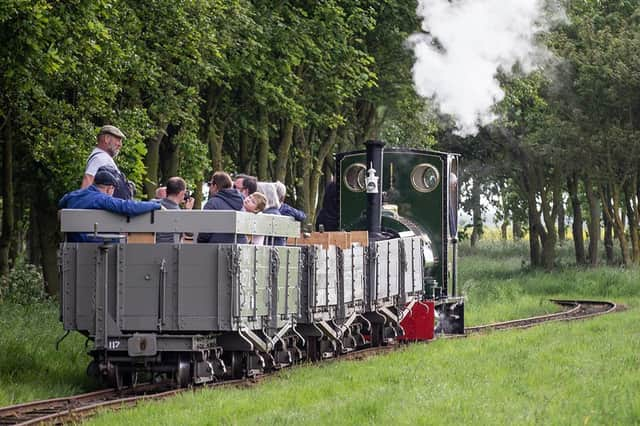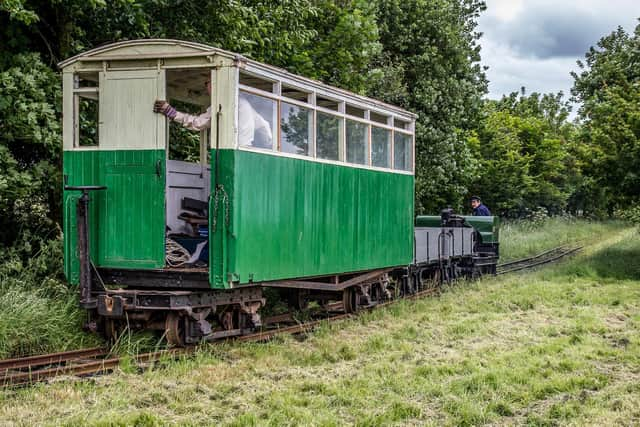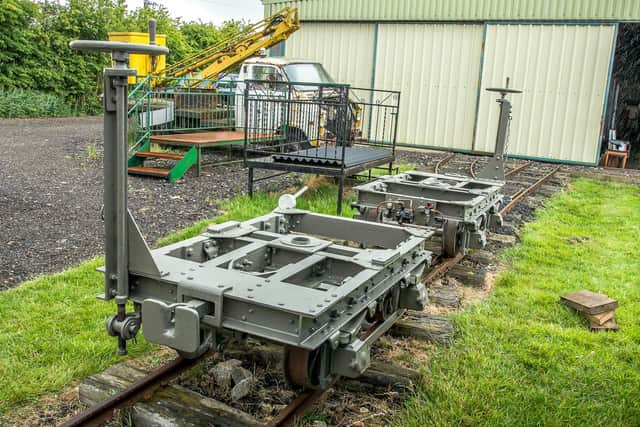Time for 'bogie men' to work their magic on coast railway


The 'bogie men' appear over the winter months to work on the 22 wagon and carriage bogies that the Lincolnshire Coast Light Railway (LCLR) has for its five carriages and three bogie wagons.
LCLR is based in Wall's Lane, Ingoldmells, and is run by volunteers, with the historic carriages used in the World War One giving trips to hundreds of visitors each year.
Advertisement
Hide AdAdvertisement
Hide AdHowever, with bogies over 100 years old, that requires continued maintenance.


Bogies in good condition are a key element of rail safety as they are crucial to keeping the trains on the tracks and making sure they can stop.
In addition to the 16 bogies required for wagons and carriages, two more are required for the rail bolster which is used to move rails around the system for track repair.
The spare four spare bogies are being used to select the best parts to keep the rest of the fleet running.
Advertisement
Hide AdAdvertisement
Hide AdBogies are of a standard design for the British World War I War Department Light Railway stock but with variations.


Golden Valley Light Railway's Eddie Draper explains: "This only came about in 1916 with the Class D underframe.
"Earlier wagons of Class C had different bogies.
"When one considers that the WDLR had about 1000 locos of various types, one starts to
contemplate the number of wagons.
"I have seen figures of over 20,000 built. Each wagon had two bogies, so that's over 40,000 of them and eight wheels, so that's over 160,000 of the round bits.
Advertisement
Hide AdAdvertisement
Hide Ad"No wonder that some of the wheels that made it into traffic contain significant defects."
During WWI, the bogies supplied all had hand brakes which stick up at one end, although some of these were removed in agricultural and industrial use post war so that on some lines, wagons ran with one braked bogie and one un-braked.
The LCLR has a selection of braked and un-braked bogies mainly coming from the Nocton Estate Light Railway - one of the Lincolnshire 'potato railways'.
Volunteer Peter Balderston said: "Generally we fit one braked bogie to each vehicle, the exception is our WWI Class D wagon 2572 adapted for passenger use with a Lottery Fund grant, which has a representative (for 1918) brake bogie on each end."
Advertisement
Hide AdAdvertisement
Hide AdTo bring the trains into the modern era, some of the bogies are now air braked. This allows for
'fitted' air braking, which allows brakes on all vehicles to be applied from the loco to stop the
train.
Prior to the introduction of air braking, stopping the train depended on the loco brakes alone, unless there was a man or men on the train winding on the brakes by hand.
The air brake system was first developed on the Ravenglass & Eskdale Railway, and then used
on the Welsh Highland Heritage Railway by Cedric Lodge.
Advertisement
Hide AdAdvertisement
Hide AdEddie Draper was working with Cedric when the LCLR first had need to install air bakes, hence the LCLR use of this system.
A lot of work has been done by many volunteers to improve the air-braking system over the years.
Three of the four air braked bogies have had extensive work done on them, including one for
the Nocton coach that was recently finished. Volunteers are now working on an un-braked bogie for this coach.
Advertisement
Hide AdAdvertisement
Hide AdPeter said: "It is important to state that the bogies are as crucial as the locos to maintain
the service.
"We are getting much better at rebuilding them by improving the design.
"As our bogies are around 100 years old, they need quite major attention to keep them
serviceable and to allow individual bogies to be serviced. We need spare bogies that we can
swap in and out from under the carriages.
Advertisement
Hide AdAdvertisement
Hide Ad"At the moment to LCLR is buying six sets of top and bottom centre bearings to replace ones worn out over the years."
In 2022, the LCLR plans to operate three coach trains. In order to do this, the Nocton coach is being refurbished for its first passenger use on the LCLR and also needs a good pair of bogies.
According to volunteer Jim Smith, the Nocton 'Queen Mary' coach was built on the Nocton
Estate Light Railway to transport the 'guns' for day’s shooting on the estate where much of the
Advertisement
Hide AdAdvertisement
Hide Adstock of the LCLR came from. The coach was built onto a steel framed Class D bogie wagon.
The Queen Mary is being restored, without glass in the windows, to provide another open air
coach for the LCLR train service. It will require one1 air braked and one un-braked bogie.
Anyone can be a 'bogie man'. There is work on the bogies for volunteers of all calibres; from removing rust, sanding down and painting to changing wheel sets, replacing the bogie centres and designing and fitting new air brakes.
To find out about volunteering at the LCLR just click on the link on the railway's homepage www.lclr.co.uk